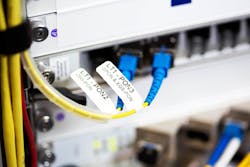One of the key assets of fiber deployment is its potential to support huge bandwidth. Every new generation of passive optical network (PON) technology unlocks more of fiber’s potential. And the best thing is that this evolution leverages the same infrastructure. In fact, this is the priority for researchers and standardization bodies: that future technologies continue to use the existing outside plant and only require changes in the electronics at either end of a fiber.
There have always been, and will continue to be, various flavors of PON technology, and all of them have been deployed. Operators make a choice of technology for various reasons: cost, service focus, competition, business priorities, timing, or usually a combination. Different flavors of PON help operators to diversify their service offering and compete better. There is no single market that drives a worldwide trend. China favored XG-PON as their next-generation technology while XGS-PON was favored across the rest of the world. Some cable operators in North America started with EPON and are now switching to XGS-PON. A growing number of altnets in the UK and Germany skipped GPON and started with XGS-PON. No two markets are the same, no two operators are the same, and hence there is no one-size-fits-all fiber technology.
Recently, we have seen a lot of debate about 25G PON and 50G PON: Which one is the next step beyond 10G PON? Which one will win? But this debate is purely academic. Each operator will select their best path forward and, therefore, there is no reason for the broadband industry to make a decision solely for one or the other. There is, and will continue to be, room for both. Wavelength plans chosen by the standardization bodies enable the two technologies to co-exist on the same fiber, meaning there’s no technology lock-in. It is all about individual choices steered by economics and strategy.
When considering the next step for fiber evolution, operators are looking at three defining factors. Namely, there must be a business need, the technology should be timely, and the PON approach should come at the right cost.
Business need
Today, operators already see the need for services beyond 10 Gbps for enterprise customers. Broadband connectivity for Industry 4.0 is a key profitability driver for operators. It creates higher margins through higher ARPU and additional product upsell opportunities like LAN, mobile, and vertical services. Industry 4.0 increasingly uses big data as well as high-resolution video and images to aid automation, process flows, and decision-making. This large amount of data then gets analyzed in the cloud—making a reliable, high-bandwidth connection a priority.
Fiber-connected enterprises are on the rise, with the gold standard currently symmetrical 10 Gbps. This speed cannot be delivered with XGS-PON as the overhead restricts available bandwidth to 8.5 Gbps. Instead, 10G business services generally rely on expensive point-to-point fiber. 25G PON and 50G PON can deliver true 10 Gbps, with plenty left over for other broadband services – making it much more cost-effective and green, as it’s a shared infrastructure. Unlike 50G, which is a technology leap and still a few years away from commercial viability, 25G PON is available today—providing operators with the only PON option to capitalize on near-term, lucrative enterprise opportunities. Given the symmetrical nature of this 10G business service, 50G is with today’s standards at par with 25G. Both are defined with 25G upstream.
Another need for 10-Gbps throughput or higher is for 5G mobile transport. At the moment, sub-6-GHz 5G is being deployed at 4G sites with the existing transport network being upgraded to meet new capacity requirements. However, as 5G moves to the faster millimeter-wave deployments and, hence, fulfills the promise of (multi-) gigabit services, new cell sites will be needed. We call this the densification of a 5G network.
These new sites will first pop up in urban and suburban environments, and each of them will require additional transport capabilities. This is exactly where fiber networks already exist, which makes PON networks a cost-effective and operationally efficient choice. The ideal way to connect those mobile sites is through a small form factor pluggable (SFP) optical network terminal (ONT) that is plugged into the mobile base stations. While XGS-PON has sufficient bandwidth for backhaul and midhaul, greater capacity is needed in areas with higher cell density or throughput. This capacity can be delivered by 25G PON today and 50G in the future. 25G PON SFPs are expected to hit the market in 1-2 years. 50G PON SFPs still require some fundamental research.
Lastly, there is a long-term need for higher bandwidth for consumer services. No doubt, the consumer segment will be well served by XGS-PON networks for many years to come. But eventually, operators will want to upgrade as applications continue to increase bandwidth requirements. In nature, consumer services will remain highly asymmetric, although more and more operators are promoting the symmetrical character of PON as a differentiation versus cable operators. The timing of this step and corresponding technology choice will, to a large extent, depend on the competitive position to which an operator aspires. Being at the front end of the bandwidth claim would favor 25G deployment; being later to the game allows operators to wait for 50G solutions.
Technology availability
The above examples demonstrate how the huge capacity of 25G and 50G PON will evolve networks that are traditionally residential networks into single access networks for the delivery of all services. The essential difference between both technologies lies in timing. 25G PON is already mature and available, being the only PON technology today that can address the business needs for >10-Gbps speeds. And it will remain so until the end of the decade. Although the first implementations of 50G could be available sooner, the technology will need time to mature and reach the right cost point before it becomes commercially viable.
When might that be? The biggest market for 50G PON is China, which sees 50G as the next step beyond 10G for residential broadband. Chinese operators are currently in the early stages, though with decent volumes of 10G PON network upgrades. The 50G PON standard currently does not allow co-existence with GPON and XGS-PON at the same time, so the introduction of 50G PON requires the GPON network to be decommissioned and upgraded to XGS-PON first. 25G PON is defined in a way that it can co-exist with GPON, XGS-PON, and future 50G PON, allowing more flexibility in upgrade paths (see figure below). China’s own Academy of Information and Communications Technology (CAICT) expects to see significant deployments of 50G PON only in 2029 and beyond. This will drive the solution maturity from prototype to volumes that are needed to bring down costs.
The right cost
The final consideration to determine the next evolution: the right cost. In massively deployed fixed broadband infrastructures, cost-efficiency is key to make a technology successful. Developers of both 25G and 50G are implementing techniques to bring the cost down.
During the past few decades, the success of TDM-PON depended on the pre-existence of mature optical and electronic technologies deployed in transport systems. The volumes of these technologies drove price erosion, enabling their adoption by PON. 25G PON is leveraging another industry that nowadays is driving significant optical volumes: data centers. The data center business is booming, and 25-Gbps channels have been massively deployed for intra-data center connectivity. 25G PON is leveraging this mature ecosystem and the huge volumes of these existing optical technologies deployed in data centers to achieve cost-efficiency.
In addition, 25G PON is very easy to introduce, bringing the operational costs down. It’s available in the same hardware (platform, line cards) that is being deployed today for GPON/XGS-PON and can be managed in the same way.
Similarly, there is an effort in 50G PON to bring the cost down. For example, 50G PON will use some 25G components (e.g., receivers) but will also need a new generation of components. These new components will have an impact on the cost and require years before they reach maturity and cost-efficiency. 50G is the first generation of PON technology that will require optical amplification and digital signal processing (DSP). At such high speeds, optical amplification is needed at the transmitter to overcome the limitation in receiver sensitivity, while a DSP is needed at the receiver to correct for the impact of both chromatic dispersion and the receiver’s bandwidth limitations. To bring the cost down, DSP will be implemented via system-on-chip (SOC), and these chips will reach cost-efficiency with volumes by the end of the decade.
From an operational point of view, 50G PON will require more work. For instance, it requires higher-capacity platforms, new line cards, and the need to decommission either the GPON or the XGS-PON network. None of these is needed for 25G PON.
Conclusion
Our industry is starting to look at PON differently. From being seen primarily as a residential broadband technology, operators are now looking at PON as a way of delivering a unified access infrastructure—underpinning residential and business broadband, mobile backhaul, and wholesale services, and enabling smart cities. This is where 25G, and later 50G, excel: They enable PON to be used to connect everything and everyone while allowing operators to differentiate in a highly competitive landscape.
Ultimately, market forces dictate the technologies. Customers prefer competition to monopolies, and different PON technologies help operators compete through unique commercial, business, technical, and operational imperatives. In a $10 billion market with hundreds of different broadband providers including telcos, MSOs, neutral hosts, utilities, governments, and others, there is a need for multiple evolutionary paths. Operators will choose one based on their business strategy, timing, and cost.
It’s important to understand the challenges and opportunities and leverage the technologies that will make operators successful, now and in the future. The now is 25G PON. The future is 50G.
Broadband makes the world a better place, and everyone deserves fiber connectivity. But that can only be achieved if we give operators different PON technologies to choose from that accommodate their specific needs.
The future of fiber is truly bright.
Geert Heyninck is vice president and general manager of the Broadband Networks Business Unit, Fixed Networks, at Nokia.
About the Author

Geert Heyninck
Vice President and General Manager, Broadband Networks Business Unit, Fixed Networks, Nokia
Geert Heyninck is vice president and general manager of the Broadband Networks Business Unit, Fixed Networks, at Nokia.

